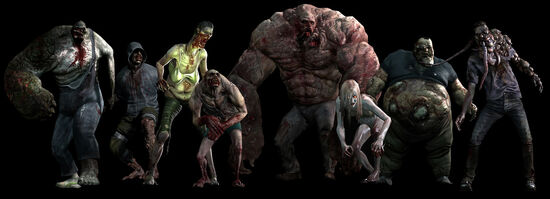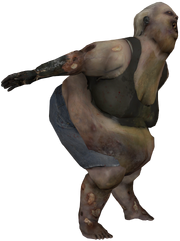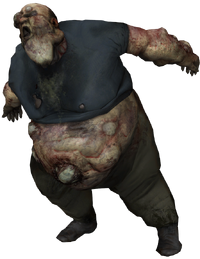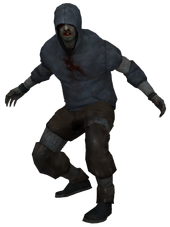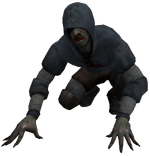 Halo: Reach is a first-person shooter video game developed by Bungie and published by Microsoft Game Studios for the Xbox 360 console. Reach was released in North America, Australia, and Europe on September 14, 2010. The game takes place in the year 2552, where humanity is locked in a war with the alien Covenant. Players control Noble Six, a member of an elite supersoldier squad, during the battle for the world of Reach. As the Covenant begin their assault on the planet, the UNSC begin their heroic yet ultimately futile effort to repel the alien invaders.
Halo: Reach is a first-person shooter video game developed by Bungie and published by Microsoft Game Studios for the Xbox 360 console. Reach was released in North America, Australia, and Europe on September 14, 2010. The game takes place in the year 2552, where humanity is locked in a war with the alien Covenant. Players control Noble Six, a member of an elite supersoldier squad, during the battle for the world of Reach. As the Covenant begin their assault on the planet, the UNSC begin their heroic yet ultimately futile effort to repel the alien invaders.
Reach was originally announced at the Electronic Entertainment Expo 2009 in Los Angeles, California, with the first in-engine trailer shown at the 2009 Spike Video Game Awards. Players who purchased Halo 3: ODST were eligible to participate in a Reach multiplayer beta in May 2010; the beta allowed Bungie to gain player feedback for fixing bugs and making gameplay tweaks before shipping the final version. The developers focused on creating a compelling world, more difficult enemies, and updated graphics and audio.
Halo: Reach grossed US$200 million on its launch day, setting a new record for the franchise. The game sold well in most territories, moving more than three million units its first month in North America. Critical reception was positive; reviewers from publications such as IGN, GamePro, and Official Xbox Magazine called it the best Halo title yet. Reach was Bungie's final Halo game, with future games overseen by the Microsoft subsidiary 343 Industries.<span class=”fullpost”>
Gameplay

Halo: Reach is a
first person shooter. Players assume the role of Noble Six, a
supersoldier engaged in combat with an alien collective known as the
Covenant. Gameplay is more similar to the original
Halo: Combat Evolved than later games in the series. The player character is equipped with a recharging energy shield that absorbs damage from weapons fire and impacts. When the energy shield is depleted, the player character loses health; when the character's health reaches zero, the game reloads from a saved checkpoint. Health is replenished using
health packs scattered throughout
Reach's levels.
[2]
In
Halo 3, players could wield one-use equipment power-ups that offer temporary offensive or defensive advantages.
[3][4] This system of single-use equipment is replaced in
Reach by reusable and persistent armor abilities which remain with a player until they are replaced. Among the abilities are a jetpack,
active camouflage, sprint, and "armor lock", which immobilizes the player but grants invincibility for a brief period of time.
[6] In addition to tweaks and changes to existing weapons from the
Halo series,
Reach features new weapons fulfilling various combat roles.
[7]
Multiplayer
Reach supports player-versus-player multiplayer through splitscreen on a single Xbox 360, local networks (
System Link), and the
Xbox Live service.
Reach includes standard multiplayer modes such as
Slayer and King of the Hill, as well as gametypes new to the franchise. In "Headhunter", players drop skulls upon death, which other players can pick up and deposit at special zones for points. When a player dies, all their accumulated skulls are dropped. "Stockpile" has teams race to collect neutral flags, holding them at capture points every minute for points. "Generator Defense" pits three Spartans against three Elites (A type of Covenant soldier). The Elites' objective is to destroy three generators, while Spartans defend the installation. After every round the players switch roles. "Invasion" is a six versus six mode with three squads of two on each team.
[8] The gametype pits Spartans against Elites; Elites vie for control of territories to disable a shield guarding a navigation core. Once the shield is disabled, they must transfer the core to a dropship—the Spartans must prevent this from happening. As the game progresses, new vehicles and areas of the map become open.
[2]
Alongside other multiplayer options is "Firefight", a version of which appeared in
Halo 3: ODST. In Firefight players take on increasingly difficult waves of foes in a game of survival. Players can customize Firefight options, including the number and types of enemies. It has also been announced that a firefight versus is playable in which there is an Elite team trying to keep the Spartan team from scoring points. Game modes like Generator Defense are playable in Firefight.
[9][10] Although Firefight in
ODST only supported matches among players that were on each others' friend lists, firefight in
Reach supports online matchmaking between random players.
Forge, a level editor that first appeared with
Halo 3, was updated for
Reach, and can be used to edit the default multiplayer maps as well as a large blank map known as Forge World. Forge World itself is home to several Bungie-created Forge maps that shipped on-disc. Forge tools have been improved; objects can now be phased into other objects, and can also be
snapped to specific orientations.
[11]
Plot
Setting and characters
Reach takes place in a futuristic
science fiction setting during the year
2552, shortly before the events of the 2001 video game
Halo: Combat Evolved,
[12] and during the events of the 2001 novel
Halo: The Fall of Reach. Humans, under the auspices of the
United Nations Space Command (UNSC), have been waging a long war against a collective of alien races known as the
Covenant. By the events of
Reach, almost all of humanity's interstellar colonies have fallen. Reach itself is an Earthlike colony that serves as the UNSC's main military hub. The colony is home to over 700 million civilians in addition to the military presence.
[13]
The game follows the actions of "Noble Team", a UNSC special operations unit composed of elite supersoldiers known as
Spartans. Players assume the role of an unnamed new addition to the team, identified by the call sign Noble Six.
[14] Noble Team's leader is Carter-A259, a no-nonsense soldier. His second-in-command, Kat-B320, has a bionic arm; together, Carter and Kat are the only two remaining original members of Noble Team. The other members include heavy weapons specialist Jorge-052, assault specialist Emile-A239, and marksman Jun-A266.
[12]
Story
Noble Team, dispatched to discover why a communications relay has gone offline, discovers Covenant forces on Reach. Soon after, the team is deployed to "Sword Base", an installation belonging to the Office of Naval Intelligence (ONI), to defend it from a Covenant vessel. The team meets the scientist
Catherine Halsey, the mastermind behind the Spartan program and their MJOLNIR
powered armor. Halsey informs Noble Team that the Covenant forces at the relay were searching for important information.
Jun and Six are dispatched on a covert overnight mission to assess the Covenant's strength and discover an invasion force. The following morning, Noble Team leads UNSC forces in assaulting a Covenant ground base and removes fortified defenses at the base. When a massive Covenant super-carrier joins the fight, Jorge and Six take part in a plan to destroy the carrier using a makeshift bomb. After defending a space station orbiting Reach until its defenses come back online, Jorge and Six use starfighters to infiltrate a smaller Covenant ship, prepare the bomb and set the ship on a docking course with the carrier. Its timer malfunctions, so Jorge stays behind and sacrifices himself to destroy the carrier. Moments later, Covenant ships start arriving at Reach in huge numbers and begin a full-scale invasion of the planet.
After returning to the surface of Reach, Six travels to the city of New Alexandria and aids the local military in fighting the Covenant and evacuating the city, reuniting with Noble Team along the way. However, they are forced to retreat to an underground bunker and Kat is killed by a Covenant sniper before they reach it. Later recalled to Sword Base, Halsey guides Noble Team underground to an ancient
Forerunner artifact that she believes is key to winning the war against the Covenant. Six, Carter and Emile are entrusted with transporting the artificial intelligence
Cortana, and the information she carries concerning the artifact, to the UNSC ship
Pillar of Autumn. Jun leaves the team to escort Halsey to another base.
En route to the
Autumn's dry dock, Carter is critically wounded. He rams his ship into a Covenant mobile assault platform, allowing Six and Emile to safely reach the shipyard where the
Autumn is located. Emile takes control of a
railgun emplacement to defend the
Autumn while Six fights through Covenant ground forces to get Cortana to Captain
Jacob Keyes. When Emile is slain by Elites, Six remains behind to take Emile's place at the gun, ensuring the
Autumn's escape. The
Autumn flees from Reach and discovers a
Halo ringworld, leading straight into the events of
Halo: Combat Evolved.
The
post-credits scene puts the player in control of Six's
last stand against overwhelming Covenant forces. After sustaining heavy damage, Six drops his or her shattered helmet and is overwhelmed. Years later, Six's helmet remains on the grassy plains of a now-rejuvenated Reach. A voice-over narration by Halsey eulogizes Noble Team, who ultimately enabled humanity's victory over the Covenant.
Development
Design
After finishing development of
Halo 3 in 2007, development studio
Bungie broke into two teams. One group began working on a standalone expansion project—
Halo 3: ODST—while another group, headed by Creative Director Marcus Lehto and Design Lead Christian Allen,
[15] began work on what would become
Reach.
[16] The team considered many different concepts and approaches to the game; among the rejected ideas was a sequel to
Halo 3.
[17]
In brainstorming settings, the team kept returning to the idea of a prequel to the first
Halo game. "And Reach, as a fictional planet, was just a great candidate [to] play around with. It's such a rich world, with such a great fiction surrounding it," said Lehto. "We were like: 'Okay, that's it. We've just got a lot of things we can do there so we can build an immense story with it.'"
[18] No longer burdened with continuing story threads as they were with the trilogy of
Halo games that came before, Bungie viewed using Reach before the events of
Combat Evolved as a way to introduce new characters and settings.
[19] As
Reach ends with the destruction of the titular planet, Bungie focused on making sure players still felt a sense of accomplishment and success. "It is a challenge overall to ensure the player feels they’re doing the right thing all the way to the end," said Lehto.
[20][21] The final gameplay sequence at the end of the game was the subject of intense discussion, with some at Bungie wanting to cut it out. Ultimately, executive producer Joe Tung noted, "the 'survive' component ... felt great to us. We definitely talked about different versions of how that was happening and different versions of ending [the game] cinematically, but I think the way that it ultimately ended up is just a really well-paced, significant and emotionally impactful ending."
[22]
The
Halo games consistently featured protagonists that were silent during gameplay sequences. Community manager Brian Jarrard pushed for greater customization of the player character, including the ability to choose a female Noble Six and have the cinematics and dialogue change accordingly.
[23]
The prequel concept also gave the art team an opportunity to redesign key enemies, weapons, and elements of the series, though 3D Art Lead Scott Shepard stressed that they remained true to the spirit, if not the letter, of the original designs. Artists found inspiration in the original concept art for
Halo: Combat Evolved; the shape for the redesigned Covenant Grunts came from a sketch by Shi Kai Wang done ten years earlier.
[24]
Technology
For
Halo 3, the first
Halo game on the Xbox 360, Bungie had been forced to shrink parts of the game to fit the constraints of what the game engine was capable of delivering.
[23] For
Reach, Bungie made it a goal to capitalize on the Xbox 360 hardware to make every part of the game look better than what came before.
[25] Originally, the plan for
Reach was to port existing
Halo 3 assets and update them, but as Shepard noted, "The more we started looking into this, the more we found that realistically we could rebuild each asset from scratch with a huge increase in quality without significantly investing more time."
[26] Texture resolution and polygon counts for models were increased; the
Reach assault rifle is constructed of more polygons than an entire Marine character from
Halo 3.
[24]
Much of the engine was redesigned.
[27] To increase replay value, the developers focused on improving the artificial intelligence.
[25] Rather than scripting enemy encounters, the developers focused on a more
open world or sandbox approach to battles.
[27] Reach was completed in July and August 2010 before being shipped off for manufacturing
Multiplayer beta
Reach's multiplayer beta was open to owners of
Halo 3: ODST. Bungie's previous multiplayer beta for
Halo 3 had drawn 800,000 players. More than three million copies of
ODST were sold by November 2009,
[37] but Bungie did not know how many players might appear for
Reach and estimated between two and three million.
[38] Due to development schedules, the beta code offered to players was six weeks old, and several bugs and issues in the beta had already been addressed internally. While there were concerns that these sorts of issues might tarnish players' perception of the game, Jarrard noted that they had little choice but to ship it with the issues and attempt to communicate with players concerning the fixes.
[39]
More than 2.7 million players participated in the beta, which lasted from May 3 to May 20.
[40] The game was rolled out from an internal group of Bungie or Microsoft employees, with the total number of players in the thousands. When the beta went public, more than a million played the first day, causing back-end servers to struggle to handle the traffic. While the engineering team overestimated server load, bugs in server clusters caused game uploads to become backed up, slowing matchmaking to a crawl until the underlying issues could be fixed. Jarrard noted that the 16 million total hours of play time and large-scale rollout of the game was vital to seeing how
Reach would perform.
[39][41]
Bungie used the beta to fix mistakes, glitches, and change the balance of gameplay elements.
[42] "We needed our fans to provide feedback," said Lehto, adding that having a large audience to "hammer" on the game allowed them to gather useful feedback to mold the finished product.
[43] The game automatically collected statistics such as upload speeds, the time it took players to find matches, and game preferences, but sorting out what Jarrard called "the more subjective anecdotal feedback" from emails, notes, and forums was more difficult. On Bungie's community site, Bungie.net, the
Reach beta generated over 360,000 forum posts alone. In order to manage the high volume of feedback, Bungie created official threads for groups of issues; "We tried to give people a little bit more of a direct avenue to give that feedback and to make our lives easier. It was definitely a lot to assess and digest," said Jarrard.
[39] Some player responses did not align with datasets from the game—multiplayer design lead Chris Carney recalled that early in the beta there was vocal dissatisfaction with the pistol, but by the end of the beta it was the weapon that generated the most kills in all games. On noticing trends and possible imbalances in the game, Bungie deployed special test matches to eliminate lurking variables and make informed changes.
[44]

Awards
| Honor | Awards | Presented by | Date |
| Best Sound[99] | GG Awards 2010 | Good Game | December 6, 2010 |
| Best Xbox 360 Game[100] | 2010 GR Awards | Game Revolution | December 21, 2010 |
| Best Shooter[101] |
| Shooter Game of the Year[102] | Game of the Year 2010 | GameSpy | December 22, 2010 |
| Game of the Year[103] | Drunk Tank Awards 2010 | Drunk Tank Podcast | January 5, 2011 |
| Best Multiplayer | Spike Video Game Awards | Spike TV | December 11, 2010
</span> |




















